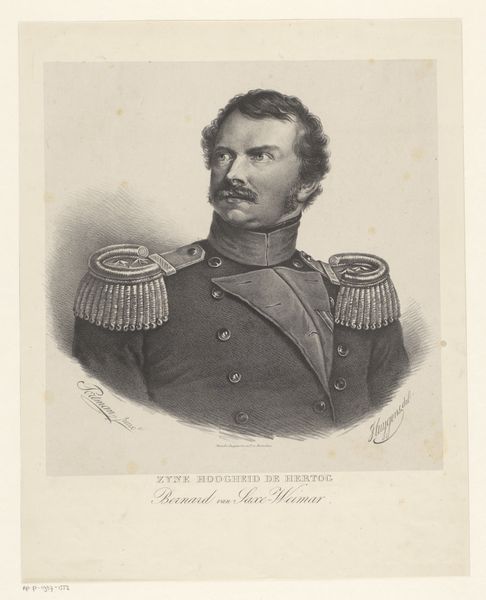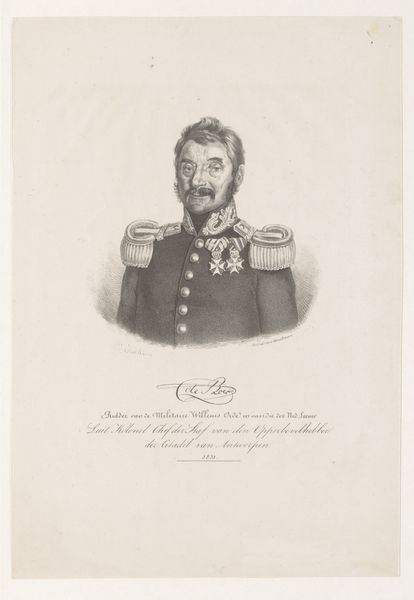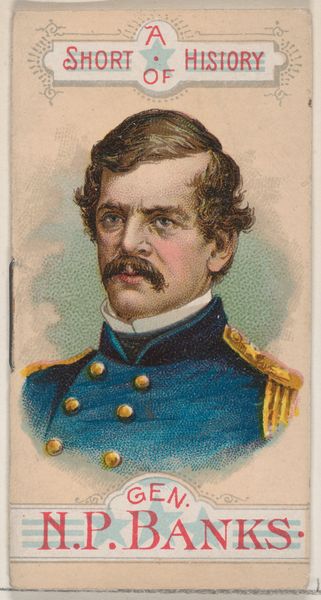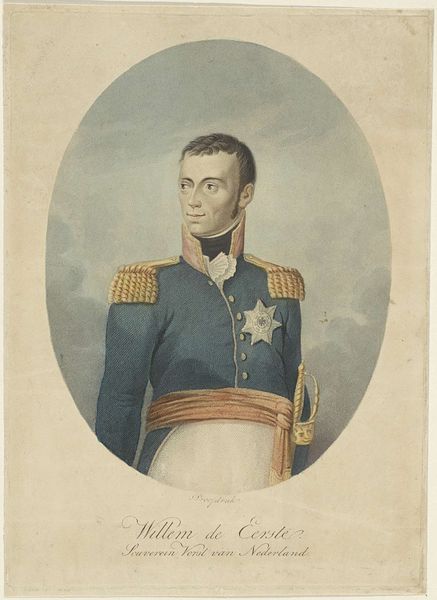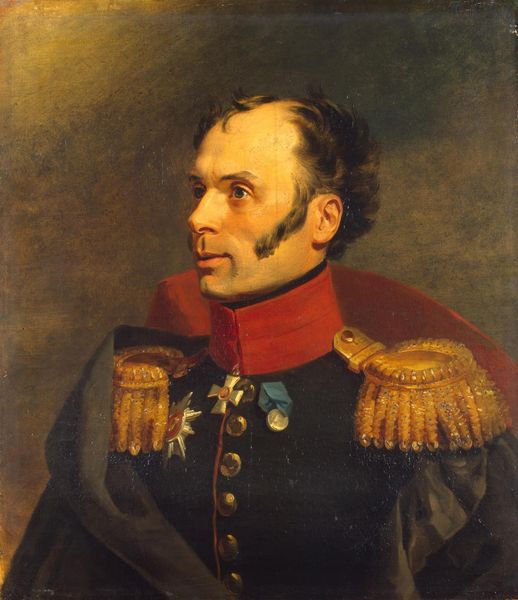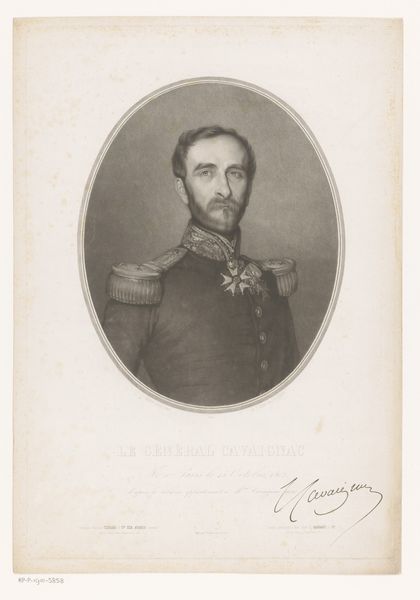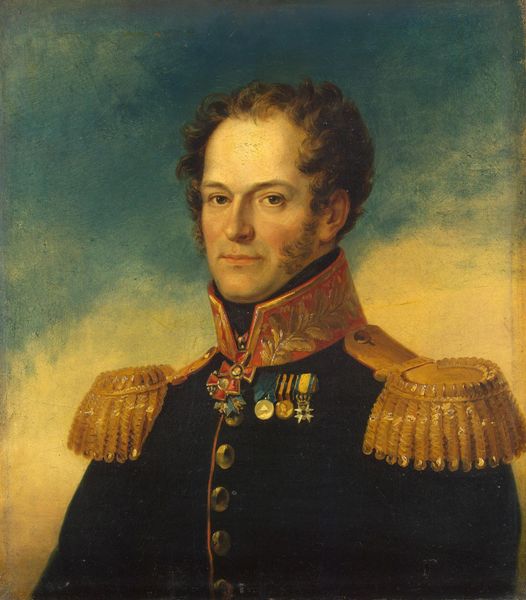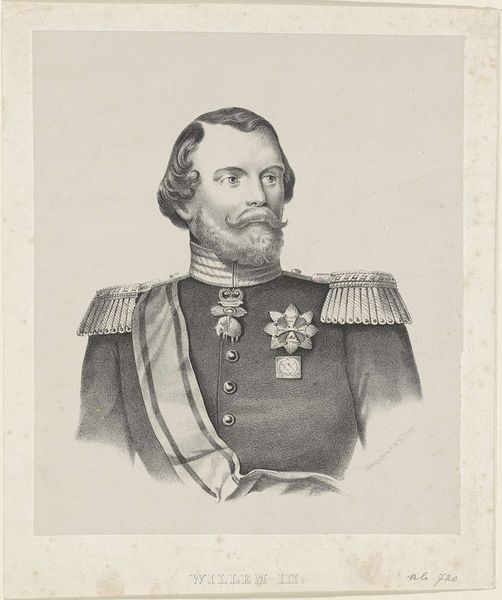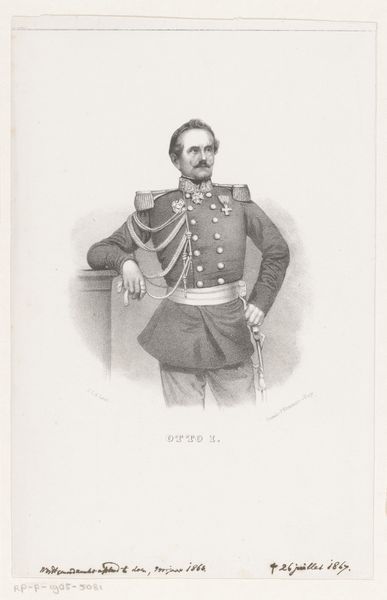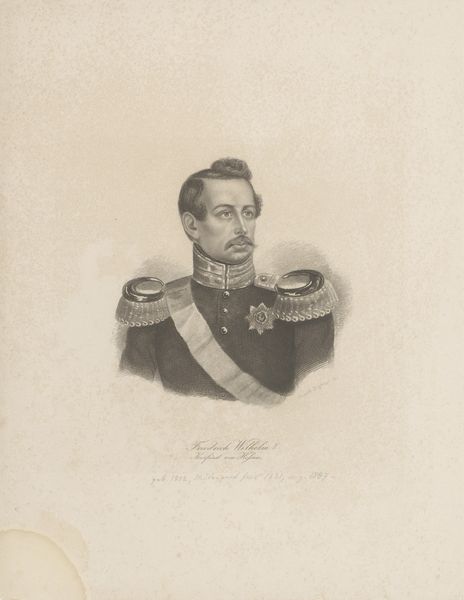
Dimensions: height 456 mm, width 378 mm
Copyright: Rijks Museum: Open Domain
Editor: Here we have an intriguing watercolour portrait, *Portret van de Hertog van Saxen-Weimar,* dating back to 1869, made by Cornelis Sebille Roos. It's hard to ignore the man's imposing presence, accentuated by his military attire. What do you see in this piece? Curator: What I see is a careful orchestration of symbols meant to convey authority and nobility. Think about the oval format itself; traditionally, it's associated with commemorative portraiture, suggesting someone important enough to be remembered. The Duke's uniform isn't just fabric; it’s a statement of power. Notice the placement of decorations, signifying military merit, their golden sheen catching the light. Do you think they make a subtle suggestion of divine right? Editor: That's an interesting angle. I hadn’t considered the divine right connection, but the emphasis on his decorations definitely highlights his authority and achievements. I was more focused on the colour palette. The red sash seems to boldly divide the visual space. Curator: Exactly! Red, of course, has always been associated with power and royalty. It is drawing our eye toward a story beyond his official role as a duke. Think of its implications – bravery, passion, even sacrifice. How might those colour choices shape our understanding of his character? Editor: Now that you point that out, the red sash, along with those intricate epaulettes, give the impression that he’s not merely a duke, but maybe even a heroic figure or leader to be looked up to. Thanks for pointing that out, I feel like I'm really beginning to see this as more than just a formal portrait. Curator: Precisely! By exploring the symbolic language embedded within the image, we gain deeper insights into the duke's legacy, the context of the time, and our enduring fascination with power, representation, and remembrance.
Comments
No comments
Be the first to comment and join the conversation on the ultimate creative platform.
